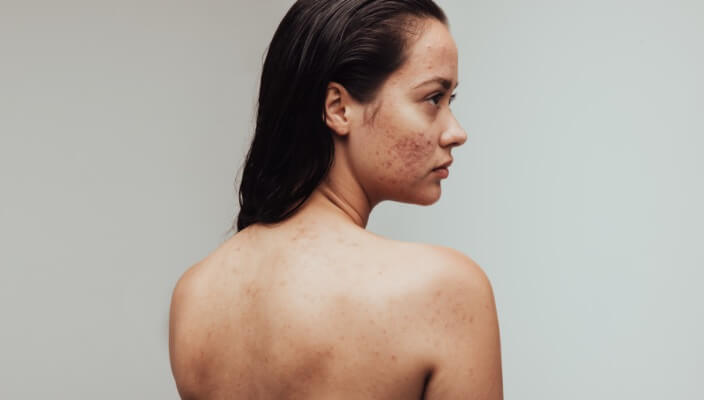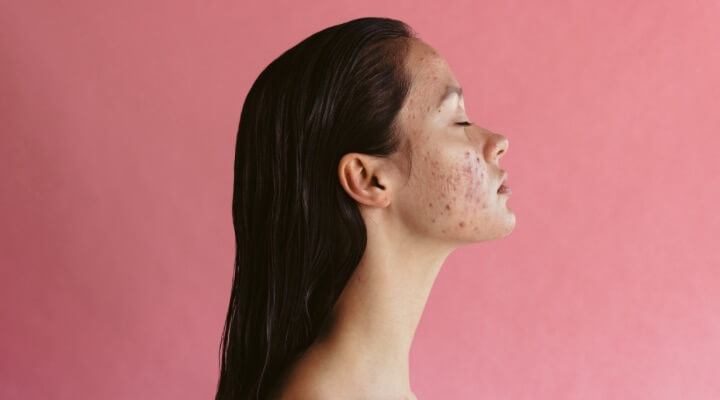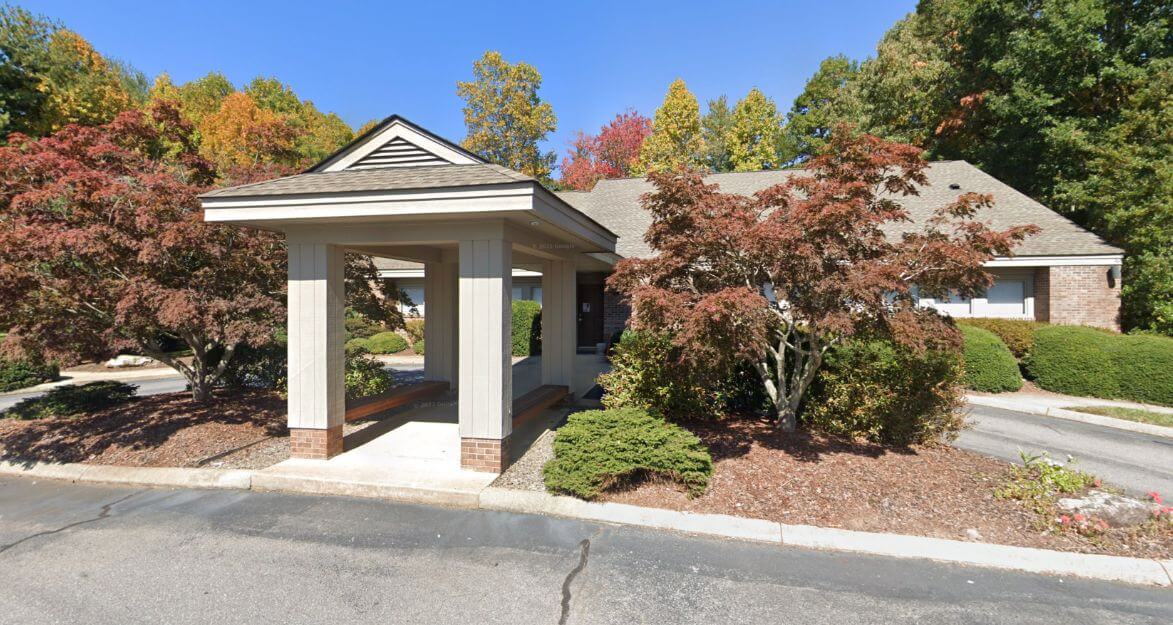Acne and Aging: Why You Might Still Get Breakouts in Your 30s, 40s, and 50s
Discover why acne can persist in your 30s, 40s, and 50s
 When we think of acne, it’s often associated with teenage years and hormonal changes that come with puberty. However, for many adults, breakouts don’t stop after high school. Persistent acne can continue well into your 30s, 40s, and even 50s, often presenting new challenges for skin that’s also experiencing the natural effects of aging. Understanding the causes of adult acne and how it differs from adolescent breakouts is the first step in finding the right treatments for clearer, healthier skin.
When we think of acne, it’s often associated with teenage years and hormonal changes that come with puberty. However, for many adults, breakouts don’t stop after high school. Persistent acne can continue well into your 30s, 40s, and even 50s, often presenting new challenges for skin that’s also experiencing the natural effects of aging. Understanding the causes of adult acne and how it differs from adolescent breakouts is the first step in finding the right treatments for clearer, healthier skin.At The Skin Surgery Center, we specialize in addressing both the root causes of adult acne and the signs of aging, offering personalized treatments that target your unique skin needs. From hormonal fluctuations to environmental stressors, there are several factors that could be contributing to your persistent acne. Let's dive into why these breakouts might still be happening and how you can address them effectively.
Why Does Acne Persist in Adulthood?
Adult acne is more common than you might think, with various factors playing a role. Here are some of the most common reasons breakouts continue to occur beyond your teenage years:
1. Hormonal Fluctuations
Hormonal imbalances are a major cause of adult acne, particularly in women. Conditions like Polycystic Ovary Syndrome (PCOS) disrupt the balance of hormones, leading to skin problems, including persistent acne. Menopause, too, can cause a rise in androgen levels (male hormones present in women), which increase oil production, often leading to breakouts.
2. Menstrual Cycle
Hormonal fluctuations before and during menstruation can trigger breakouts as estrogen and progesterone levels fluctuate. This type of acne typically shows up along the jawline and chin, areas that are especially responsive to hormonal changes.
3. Pregnancy
Pregnancy brings with it a whole new set of hormonal shifts, including an increase in the skin's oil production, which can contribute to acne flare-ups. These breakouts are usually temporary but can still be frustrating.
4. Aging Skin
Aging itself can make the skin more prone to acne. As we age, cell turnover slows down, skin becomes thinner, and dryness can set in. This triggers the skin to produce more oil to compensate, leading to clogged pores and breakouts. Paradoxically, while battling fine lines and wrinkles, many adults find themselves dealing with acne at the same time.
5. Diet
What we eat can significantly impact our skin. Diets high in refined sugars and processed foods can contribute to inflammation, which in turn can lead to acne. Certain dairy products have also been linked to acne flare-ups in some individuals.
6. Environmental Factors
Stress, pollution, and exposure to irritants are other culprits of adult acne. Stress causes the body to release cortisol, a hormone that can increase oil production, leading to breakouts. Pollution and humidity can clog pores, exacerbating the issue.
Treating Acne in Your 30s, 40s, and 50s
Unlike the treatments you may have used as a teenager, treating adult acne often requires a different approach—one that takes into account both acne and the aging process. Here’s how you can manage adult acne more effectively:
1. Hormonal Therapy
For women, hormonal treatments such as oral contraceptives or anti-androgen medications can help regulate oil production and reduce acne. These treatments target hormonally-driven breakouts, which are common in adults.
2. Topical Treatments
Many over-the-counter and prescription topical treatments can help address adult acne. Ingredients like benzoyl peroxide and salicylic acid target bacteria and unclog pores, while retinoids (vitamin A derivatives) promote cell turnover and reduce both acne and signs of aging. Retinoids are particularly beneficial as they also combat fine lines and wrinkles, making them a dual-purpose treatment.
3. Professional Treatments
For more severe or persistent cases, working with a dermatologist is crucial. Chemical peels, microneedling, and laser therapies can all target acne while also addressing aging skin concerns. Laser treatments not only help reduce inflammation but also stimulate collagen production, improving the overall health and appearance of the skin.
4. Adjusting Your Skincare Routine
Adult skin requires a gentler touch. Opt for a mild, gentle cleanser that won’t strip the skin of moisture, and look for non-comedogenic (won’t clog pores) moisturizers to keep your skin hydrated. Using sunscreen is essential—choose a formula designed for sensitive skin to prevent irritation and breakouts.
Get the Right Treatment for Your Skin
Adult acne can be frustrating, especially when combined with the natural signs of aging. However, with the right approach, you can achieve clearer, healthier skin. If you’re in your 30s, 40s, or 50s and still struggling with breakouts, The Skin Surgery Center can help. Our dermatologists are experienced in treating adult acne and aging skin, offering customized solutions to meet your needs.
Don’t let acne continue to affect your confidence. Schedule an appointment with Skin Surgery Center today and learn more about the effective treatment options available for adult acne.



